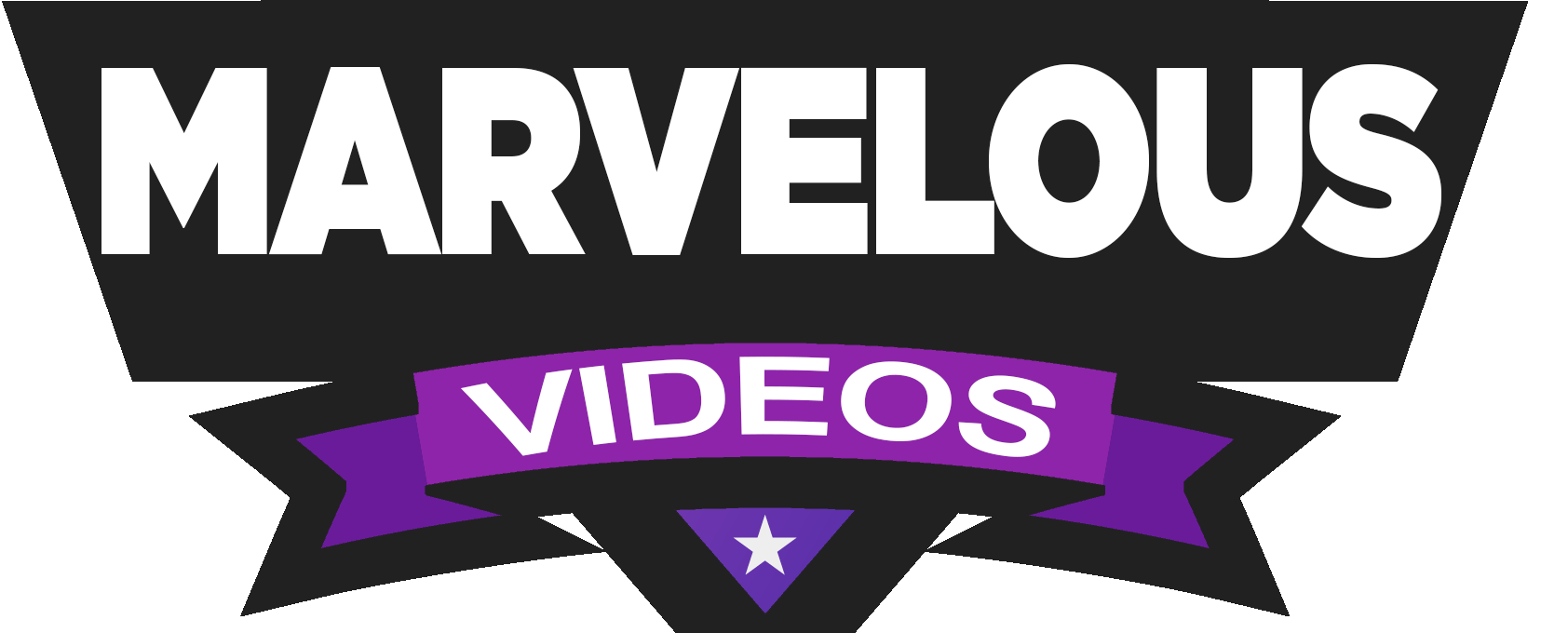In the 1990s, bright colors, grunge music, and Saturday morning cartoons were all popular, and nostalgia for them can be found on TV, in movies, and even in fashion. These years are believed to be among the best and most innovative in animation history, with shows like DuckTales, Mighty Morphin Power Rangers, Teenage Mutant Ninja Turtles, Ren & Stimpy, Batman: The Animated Series, and many others.
For millions of youngsters who grew up during the golden age of motion graphics, television was a crucial source of amusement. It was frequently seen after school, on weekends, and even during the summer vacation. The 1990s have been nicknamed the “American animation renaissance” for restoring the business after a significant decrease in popular popularity in the late 1970s and 1980s.
Cartoons from the 1990s taught young children a lot about the world, diversity, racism, and life lessons all in thirty minutes. They also had great artwork and effectively launched a new generation of animated cartoons. We will look at the Top 15 Most Underrated Yet Impactful 90’s Cartoons That Are Now Forgotten Gems in this video. The mainstream ones are not the only ones who deserve all the credit!
Animaniacs
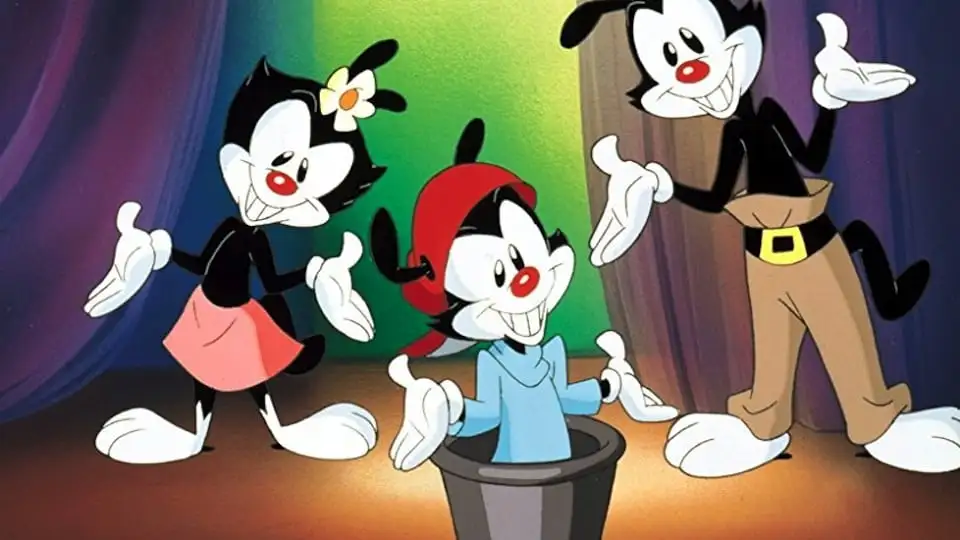
The television show “Animaniacs,” which combines wit, slapstick humor, and popular culture references, showcases a large set of characters, the most prominent of whom are the Warner brothers, Yakko and Wakko, and their sister, Dot — three close-knit siblings who have a blast wreaking havoc and pandemonium in the lives of everybody they encounter.
The series, which aired from 1993 to 1998, also includes a number of humorous educational sections, many of which are presented in a musical style. Tom Ruegger produced it for the Fox Kids block prior to actually moving to The WB in 1995 as part of its Kids’ WB afternoon programming block, where it lasted until November 14, 1998.
In the year 2020, Tom Ruegger’s original 1993 animated tv show was revived with the same title. The Warner siblings, Yakko, Wakko, and Dot, as well as Pinky and the Brain, come back in the new show. It’s not exactly the same, but it’s worth a look for fans!
The format of the show was similar to “The Carol Burnett Show” in that it was usually introduced by the three Animaniacs, Wakko, Yakko, and Dot, and then an ensemble set of characters would appear in a diverse array of skits. Because of its exceptionally intelligent writing, it was one of the finest children’s television programs in the 1990s. The show is beautifully animated, with vivid colors, sharp backgrounds, and compelling character motions.
Not only is the soundtrack catchy, but it’s also unforgettable. The scripts and jokes are clever and funny, as are the circumstances that the characters find themselves in, no matter how ridiculous they are. This all stems from a fantastic concept; while some shows have great concepts but fail to deliver on them, Animaniacs does both, and does so brilliantly, with hilarious, touching, and endearing plotlines. The protagonists are extremely likable and have distinct personalities.
Samurai pizza cats

Tatsunoko Productions and Sotsu Agency produced Samurai Pizza Cats, an American animated television adaptation of the anime series Kyatto Ninden Teyandee. The series’ North American rights were purchased by Saban Entertainment in 1991, and a 52-episode English adaptation was created. The series takes place in Little Tokyo, a robotic city inhabited by cybernetic anthropomorphized creatures that merge feudal Japanese culture with contemporary pop culture. Emperor Fred, a shambling eccentric, is the nominal ruler of the city.
However, the city council and Princess Violet, the emperor’s daughter, are in charge of the city’s real leadership. The council is led by Seymour “The Big” Cheese, a bold and sneaky rat who is continuously plotting to overthrow the Emperor. Big Cheese is assisted by his utterly incompetent henchmen, Jerry Atric, his trusted adviser, and Bad Bird, the commander of a ninja crow troop.
Speedy Cerviche, Polly Esther, and Guido Anchovy are three cyborg cat samurai who all work together in the city’s pizzeria, and along with their operator Francine, are enlisted by Al Dente, the palace guard commander for a most important job. The three are known as the Samurai Pizza Cats and are tasked with stopping Big Cheese and his villainous cronies from taking over Little Tokyo.
The series was widely watched and loved; however, only hardcore fans remember it today, and that truly is a shame. The characters are fascinating, and the writers have included a lot of super funny comedy in this show. It is also especially well known for its one-liners and quotable dialogues that entertained people of all age groups, not just children. It also stands out because well, it had robotic fighting cats that delivered pizza – it doesn’t get any weirder or cooler than that. Despite the fact that the show is over 20 years old, it holds up well and is a lot of fun to stream.
Biker Mice From Mars
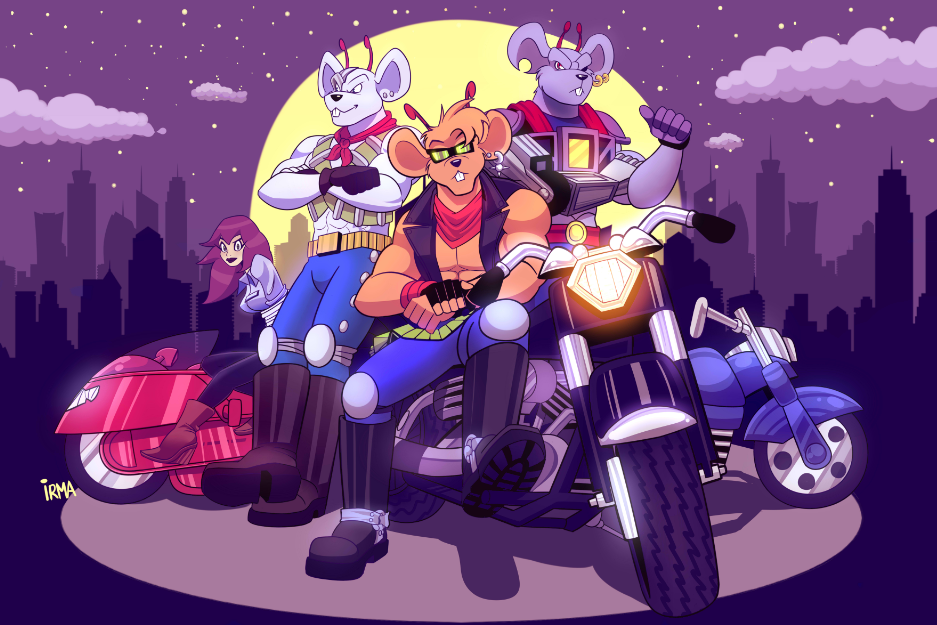
Throttle, Vinnie, and Modo are the Biker Mice from Mars and they are always prepared to take on all wrongdoers. The Plutarkians are an alien race of obese, terrible-smelling, worm-eating, fish-like humanoids that pillage other planets’ natural resources since they have destroyed their own and had nearly wiped out the race of the Biker Mice at some point.
Throttle, Modo, and Vinnie managed to acquire a spaceship and flee the Plutarkian takeover, but they were shot down by a Plutarkian cruiser and crash-land on Earth in the city of Chicago, precisely in the Quigley Field scoreboard. There, they meet Charlene “Charley” Davidson, a charming female mechanic, and learn that the Plutarkians have arrived.
The story follows as they fight against a Plutarkian named Lawrence Limburger as heroic vigilantes to stop him from depleting other planets’ natural resources with the help of his evil schemes. Despite widespread battles, there is no blood shown on screen, and several of the antagonists are beasts, extraterrestrials, and droids. The series debuted in syndication the week of September 19, 1993, and ran for three seasons with a total of 65 episodes.
This is yet another tv series that has gone unnoticed. From the backdrops to the protagonists to the bikes, the animation is pure 90s nostalgia. The series’ use of shadows and grit helped to give it a neo-noir and rugged gearhead feel. The humor is strong, and while this show is hilarious, it doesn’t take itself or us too seriously which works out well.
There are verbal and visual jokes which are quite amusing. It’s a highly entertaining mix of comedy and action that drew in audiences at the time and deserves to be recognized. For those who do remember it, it left them in stitches while simultaneously making them root for these action mice.
EXOSQUAD
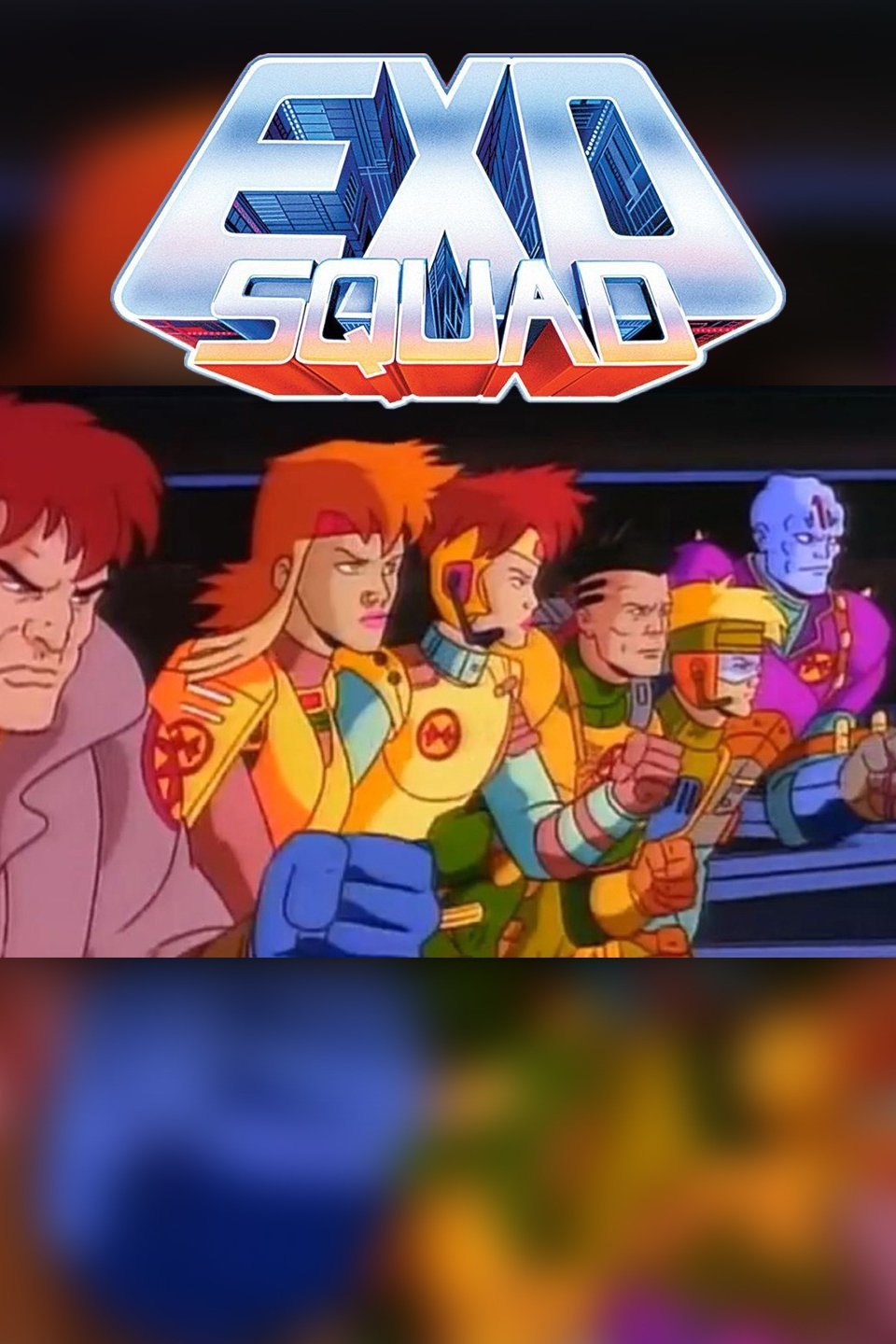
Exosquad is an animated series created by Universal Cartoon Studios as an answer to Japanese anime for MCA TV’s Universal Family Network syndicated programming block. The tv series is set in the early 22nd century and follows humankind’s intergalactic conflict with the Neo sapiens, a fictional race created as slaves or workers for the Terrans. The narrative follows Able Squad, an elite Terran unit of mecha pilots, on their quests throughout the Solar System, though there are also numerous other storylines. The war and hostility between the races are the main themes of the series.
This is a tale about all-out war, and it touches on a lot of ideas that had been circulating at the time: Man creating race of servants, and the servants making a decision to become the masters. This show definitely did not skimp out on the violence and showed a lot of graphic scenes in all their animated glory.
Exosquad took a serious approach to the plot, with multiple interconnected storytelling strands and a diverse cast of characters showcasing a broad variety of human feelings, connections, and interactions, including friendship, romance, loathing, and personal struggles, betrayal, and assuming responsibility for others. Michael Edens, the second season’s plot writer and editor, attributed much of the success of the show to its realism.
Racism and prejudice are recurring themes in the series, but they are dealt with maturity and care. Many people believe that this series was not intended for children, and while that is true, it was also very well animated and presented for children’s consumption. It was ahead of its time and had a lot of depth. Many people believe that the show laid the groundwork for other dark animated features in this genre, such as “Batman: The Animated Series” and “Gargoyles.”
Mighty Max

Mighty Max is an American animated action/horror kids television program that ran from September 1, 1993, to December 2, 1994, and was based on the British Mighty Max toys, which were a spin-off of Bluebird Toys’ Polly Pocket line. It lasted two seasons and featured a total of 40 episodes. The show follows Max, a daring adolescent who obtains a small fowl figurine inscribed with Egyptian hieroglyphs in the post, the interpretation of which reads: “You’ve been chosen to carry the cap, Mighty Max, go to the mini-mart and look for a sign “.
Stunned by the text, Max tosses the statue to the ground, smashing it, only to reveal a red baseball cap with a yellow “M,” which he then puts on. Max realizes that he can teleport across space and time using the cap, which can construct wormhole-like “portals.” The series follows Max as he is taken on adventures by this whimsical hat that transports Max wherever the hat wants.
The journeys of young Max are what make this show what it is. There are many fondly remembered episodes in this series. Most of them are arbitrary, which is a positive thing because each episode is always a new adventure, making the wait for the upcoming episode all the more thrilling, keeping viewers guessing what other monsters Max and his company will face or what otherworldy dimension or location they will visit.
The series is well-made, and the adventure is well-written and animated, despite being based on a charmingly narrow concept. This isn’t just another ‘kid’s show,’ but an iconic example of good science fiction production that plays intelligently with stereotypes. The tempo was fast-paced, the plots were cohesive, and the characters were extremely personable. Illustrations, both for lead characters and antagonists, were also excellent, making it a pleasurable viewing experience!
Sonic The Hedgehog
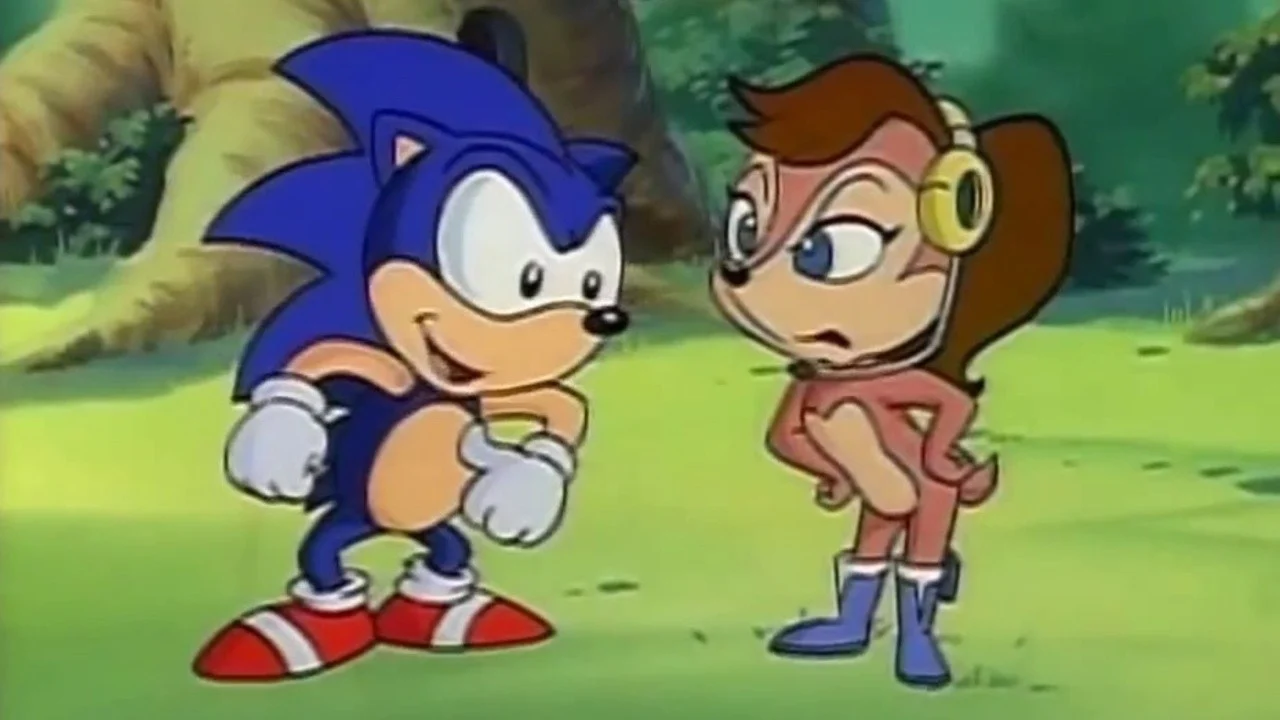
Sonic the Hedgehog is an animated television program based on the Sonic the Hedgehog video game franchise. It was created by DIC Productions, Sega of America, and the Italian studio Reteitalia in collaboration with Telecinco, and tale edited by Len Janson. This one aired after the Adventures of Sonic the Hedgehog and it is the second of DiC’s Sonic cartoons. It depicts Sonic as a member of a group of resistance fighters constantly fighting to topple Doctor Robotnik, now a tyrannical autocrat who captured their home planet Mobius decades earlier, ruling it as a contaminated industrial hellscape.
They are based in the secluded forest village of Knothole. Sonic the Hedgehog and Princess Sally Acorn, the King’s sole heir, lead them. Computer genius Rotor the Walrus, half-roboticized Bunnie Rabbot, French coyote Antoine Depardieu, Miles “Tails” Prower, and Dulcy the Dragon are among the other associates. Together, they act as a counter-revolution to Robotnik’s authoritarian rule. The series is usually referred to by fans as “SatAM” to differentiate it from other Sonic the Hedgehog media. Despite its discontinuation after only 2 seasons, the show’s fan base has raised it to cult status.
This is a very well-produced show. The characters are all beautifully depicted, likable and multifaceted, the worlds are well-drawn, and the plots are epic and thrilling. Unlike Adventures of Sonic the Hedgehog, which was mostly humorous with action, this show was more drama alongside action and was considerably light on comedy. In this series, Dr. Robotnik is arguably at his most evil.
He is ruthless, cold-hearted, vicious, murderous, insane, powerful, and intelligent. He rules the world with an iron hand, attempting to turn everyone into robots, which is terrifying to witness, but it also allows Sonic to be the ideal hero that children idolize. This is another show that all the ’90s babies would be stoked if it was to ever return to our screens in the form of a reboot.
The Real Adventures of Jonny Quest
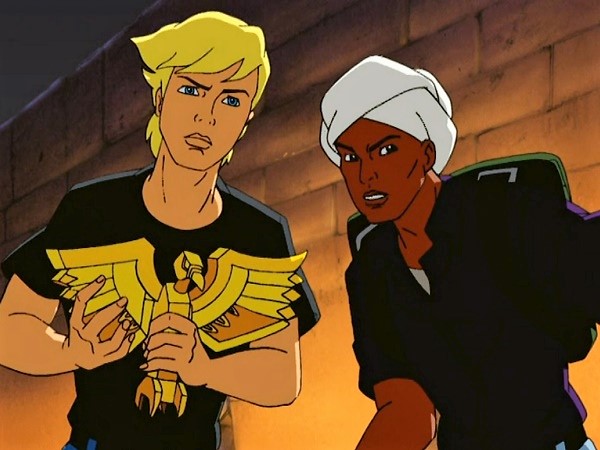
The Real Adventures of Jonny Quest is an American animated tv show that aired on Cartoon Network from August 26, 1996, to April 16, 1997. It was created by Hanna-Barbera and features adolescent explorers Jonny Quest, Hadji Singh, and Jessie Bannon as they assist Dr. Benton Quest and bodyguard Race Bannon to explore the bizarre phenomena, folk tales, and unsolved mysteries in exotic locales as a progression of the Jonny Quest (1964) and The New Adventures of Jonny Quest (1986) series.
Real Adventures takes place a few years after the original series, with Jonny and his pals now being teenagers. Lawrence aimed to pique audiences’ interest by using “real, existing phenomena,” such as the “Airstrips of Nazca,” the “Ruins of Teotihuacan,” or the “possible existence of Giant Squid.” He advised writers to include real-world mysteries, ancient aliens, remarkable regions, an alien presenting as the vice president, and other fantastical but “believable” mysteries in their stories. The Quest team constantly faces three deadly adversaries: the fearsome scientist Dr. Jeremiah Surd, malevolent former government official Ezekiel Rage, and Dr. Quest’s conniving lintel Dr. Zin.
In comparison to its 1960s counterparts, the illustrations had more depth and character. This show came to life almost entirely thanks to the use of digitally created effects. The storylines in this show were creative, intriguing, and well-written, the credit of which goes to the incredible research and brainstorming that was done in the creation process. The dialogue was excellent, the animation was flawless, and the soundtrack was fantastic as well.
This one was a far cry from the original as it was more light-hearted. This one is a mix of mystery, horror, and suspense distinguishes it from the original. This tv series has a lot of action and also a little mystery to it, which keeps the audience interested. It’s a shame, though, that it never received the appreciation it deserved.
Earthworm Jim
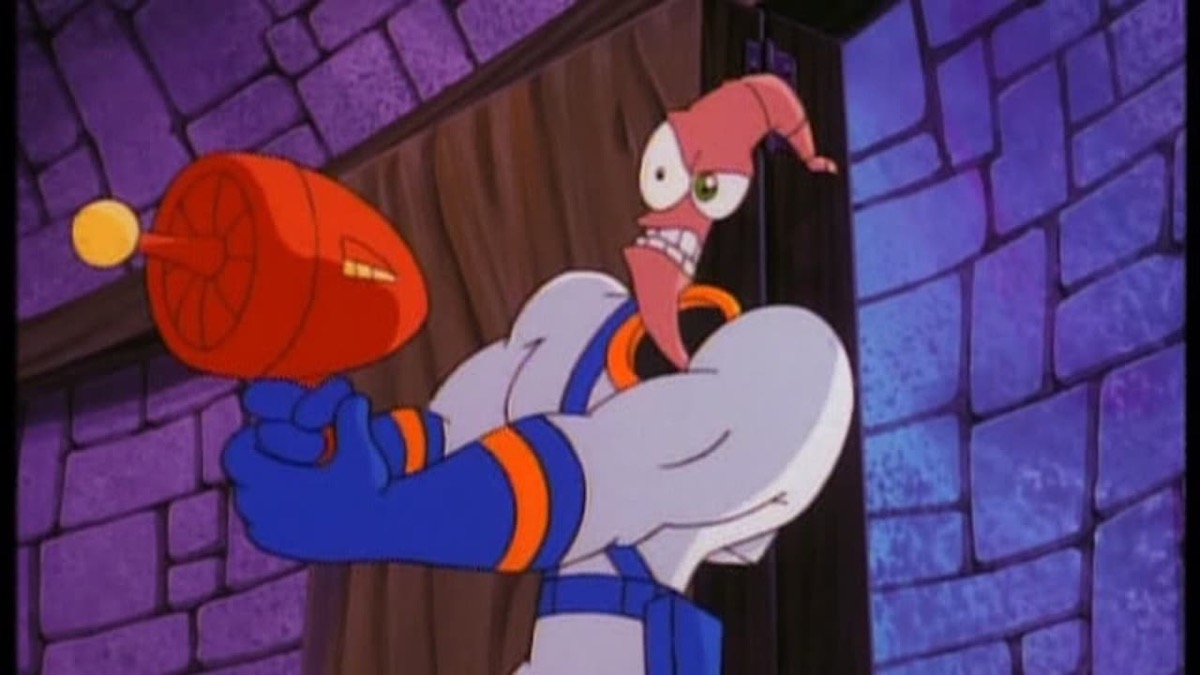
It was truly the decade of anthropomorphic animals, and you would’ve thought that cartoonists and producers would have stopped after anthropomorphic cats, dogs, and mice, even, but no – and that is how we got Earthworm Jim, a worm that we follow around as he goes on adventures. Earthworm Jim is an American animated television series created by Doug TenNapel, premised on a video game series of the same name.
The cartoon’s plot was similar to that of the video games. Except for the lyrics of the introductory title song to each episode, no origin story of Jim is narrated. Earthworm Jim already has been converted into a superhero by the super-suit by the time of the premiere episode and is already involved in an odd romantic affair with Princess What’s-Her-Name, with Jim enamored and the Princess endlessly perplexed.
The series’ innumerable villains attempt to take back the super-suit or overtake the universe in the majority of episodes. Several adversaries from the games show up in the series, including Evil the Cat, Psy-Crow, Bob the Killer Goldfish, Queen Slug-for-a-Butt, and Professor Monkey-For-A-Head. Jim also has to return his neighbor’s eggbeater and find a new power source when the battery in his suit runs out. Characters notably frequently address the viewers and the narrator, breaking the fourth wall in the process.
Earthworm Jim is a gem that goes unnoticed. It’s strange, but it’s also beautifully written and animated. The graphics are absolutely brilliant with vibrant colors, bold backgrounds, and strong and special character designs. The music is also a joy to listen to; the main theme is instantly recognizable, and the incidental music is well-crafted and inventive.
The plotlines are fantastic. They were very well-paced, sprightly, and unique, a welcome departure from the repetitive and scripted plots audiences was used to. This is a wonderfully written show, not only in terms of the fantastic and passionately delivered dialogue, but also in terms of the surreal punchlines, postmodern dry wit, and influenced spoofs. It’s truly amazing.
Tales From The Cryptkeeper
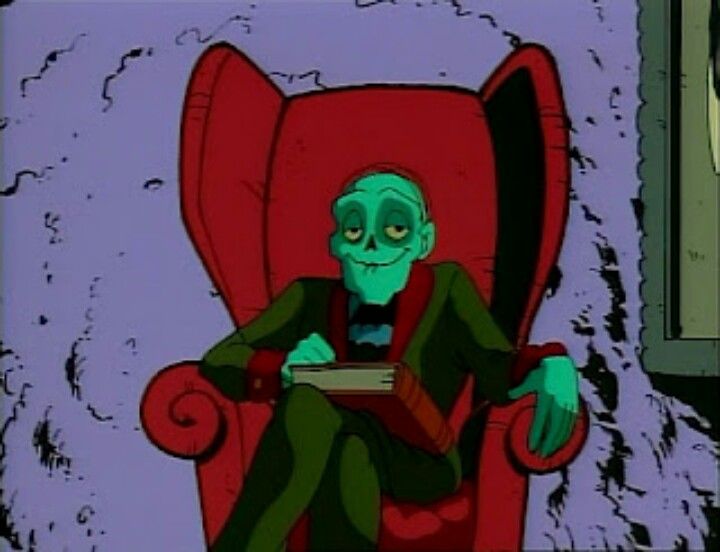
We’ve looked at almost all possible genres by now, but there is one genre kids usually don’t go near unless they are very daring and that is horror. Horror anthologies and tv shows have been abounding, but this was one directed specifically towards a younger audience. Tales from the Cryptkeeper aired on CBS throughout the 1990s, giving young children goosebumps long before R.L. Stine did.
It was geared towards the young ones who had the audacity to wake up early Saturday morning to confront the roguish ancient corpse’s horror-themed allegories. To conform to the viewing pleasures of the target audience, Tales from the Cryptkeeper was considerably gentler than its live-action counterpart, Tales From The Crypt, and all violence, blood and guts, expletives, and sexual themes were removed entirely.
The majority of the episodes take place in the fictional California city of Gravenhurst. Stories range for troublemakers being shrunk to the size of ants and people being tormented in their dreams, all scary enough for the children that watched this religiously.
Tales from the Cryptkeeper is a masterpiece in its own right, and a well-written children’s horror series that preceded the bizarre “scare the crap out of kids is fun and profitable” craze that began just a few years after the show premiered. The stories are fast-paced, with young protagonists frequently getting tangled up with supernatural beings or occurrences.
As is customary in these shows, humans are often revealed to be the biggest monsters of all, and many of the monsters aren’t so bad after all. There are a lot of jokes and puns from the Cryptkeeper and his pals, as well as good animation and energetic voice actors. Obviously, it isn’t up to today’s standards, but if the 90’s babies have anything to say, this is a fantastic show. It allowed children access to the horror, which parents otherwise often strictly policed and monitored.
Phantom 2040
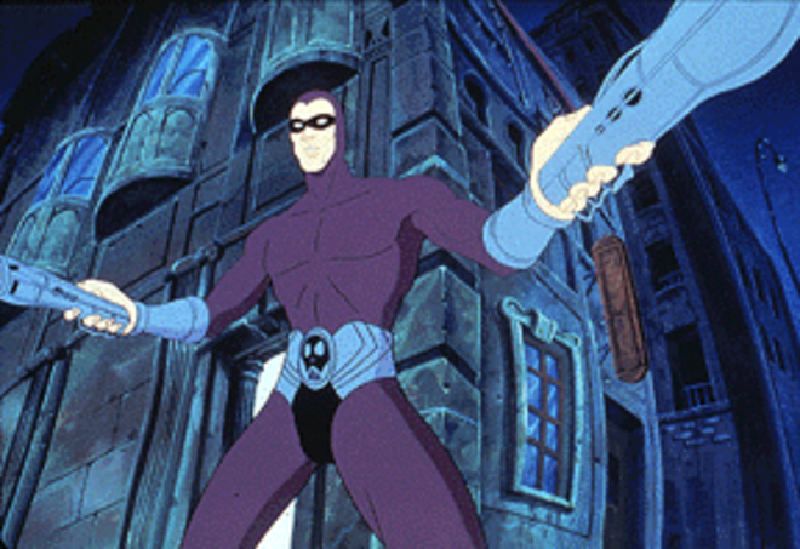
Phantom 2040 is one of very few animated series ever made to place a greater emphasis on clever plotlines and character-building than on action scenes, though both were included. It’s an animated science fiction television show loosely based on Lee Falk’s comic strip hero The Phantom. The series’ main character is the great-grandson of said comic strip character.
The series, which was based on Lee Falk’s long-running The Phantom comic strip, sent the “Ghost Who Walks” into the not-so-distant future. Natural calamities and the early twenty-first century’s limited Financial Resource Wars had ravaged the fragile natural equilibrium of an Earth once teeming with life by the year 2040. The Ghost Jungle which was thousands of square miles of mutated vegetative cover was humankind’s only hope of salvation.
This source of life was hidden deep underneath Metropia, where nobody could find it, but thankfully, college student Kit Walker Jr. had been selected to save the globe, wearing the black mask and purple suit of the 24th Phantom, his people’s saviour. Kit, the 24th Phantom, was youthful, untrained, and uncertain, but he found the bravery and strength within himself to fight the evil that threatened to ruin the Planet. This is the story of his bravery.
The premise was intriguing because it put an old, adored comic hero into the future, which was unusual at the time. The animation is fantastic; it has a fluid style to it. Another highlight is the futuristic world, which is a visual feast and is technologically advanced while also being dark and brooding, giving the show a neo-noir vibe.
The technology is interesting, and the action is fantastic and well-choreographed, with numerous well-executed firefights. The show dealt with a number of social issues, including pollution, dehumanization and mechanization, uncontrolled progress, and the dangers of allowing technology to take over our lives.
Duckman
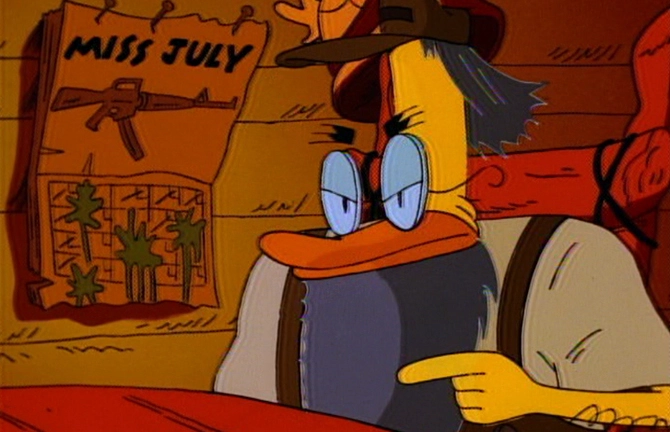
Duckman: Private Dick/Family Man is an American adult animated sitcom that ran on the USA Network from March 5, 1994, to September 6, 1997. Everett Peck designed and developed the series, which is based on personalities he invented for Dark Horse Comics in a 1990 one-shot comic book. This is that tv series where the duck detective is constantly aroused and has trouble relating to his dysfunctional family back home because he terribly misses his deceased wife. Rings a bell? Eric Tiberius Duckman, a widowed, vulgar, self-hating, egoistic anthropomorphic duck who lives with his family in Los Angeles and appears to work as a private investigator, is the protagonist of the series.
Duckman was ranked 48th in IGN’s Top 100 Best Animated TV Shows in January 2009. This isn’t a hallucination or an opioid trip; it is actually one of the greatest shows of all time. Duckman was a player that was ahead of its time and extremely ambitious, pushing boundaries that made it feel exceptional. Duckman is the ideal pick to join the handful of formerly killed shows that need to come back to life by delving into what made it so peculiar and a precursor for many contemporary comedies.
Jason Alexander nails the character, letting loose as the deranged duck. His family was full of oddballs who formed an off-kilter family system that became a forerunner to shows like Family Guy, American Dad, and even Futurama. Duckman laid the groundwork for them. Duckman was never nervous to let sentimentality or dramatics cut through the humour and deliver a gut punch or a thoughtful conclusion.
The show tackled loneliness, melancholy, and family in a way that shows like BoJack Horseman and Rick and Morty are only now beginning to tackle. Despite the fact that it hit all of the right buttons, Duckman has faded into obscurity. We strongly advise adult viewers to watch this show.
The Tick!

After Earthworm Jim, one would think we have seen all the bizarre heroes the cartoon world has to offer us, but if you thought they would stop at an earthworm, then you are very very wrong. In this series, it is a tick, yes, you heard me right, a tiny tick that is the superhero.
The Tick is an American animated television series based on the satirical superhero The Tick from New England Comics, which was created by Ben Edlund, who also served as the show’s producer. The Tick is a comic book hero who passed the National Super Institute’s tryouts in Reno, Nevada, from which superheroes who pass are designated to the greatest cities to safeguard them from violence.
He was assigned to The City after making it through the tryouts, where he befriended a retired accountant called Arthur, whom he adopts as a sidekick. The show follows Tick and Arthur as they fight to protect The City from bad guys like Chairface Chippendale, Breadmaster, El Seed, The Terror, and others with the help of Die Fledermaus, American Maid, Sewer Urchin, and other superheroes.
The Tick’s world is cool, hilarious, and strange in equal measure. The world is awash with both heroes and villains, though most of them seem to be inefficient. It’s fairly like any comic book universe where it’s one foot in reality but one foot away. Everyone appears and acts normal, but they aren’t, and no matter how much a person who lives there wishes for a normal life, there is no way in hell that it will happen. The show is exceptionally well-written and will have you in splits. If you enjoy action comedies, this is the show for you.
Freakazoid!
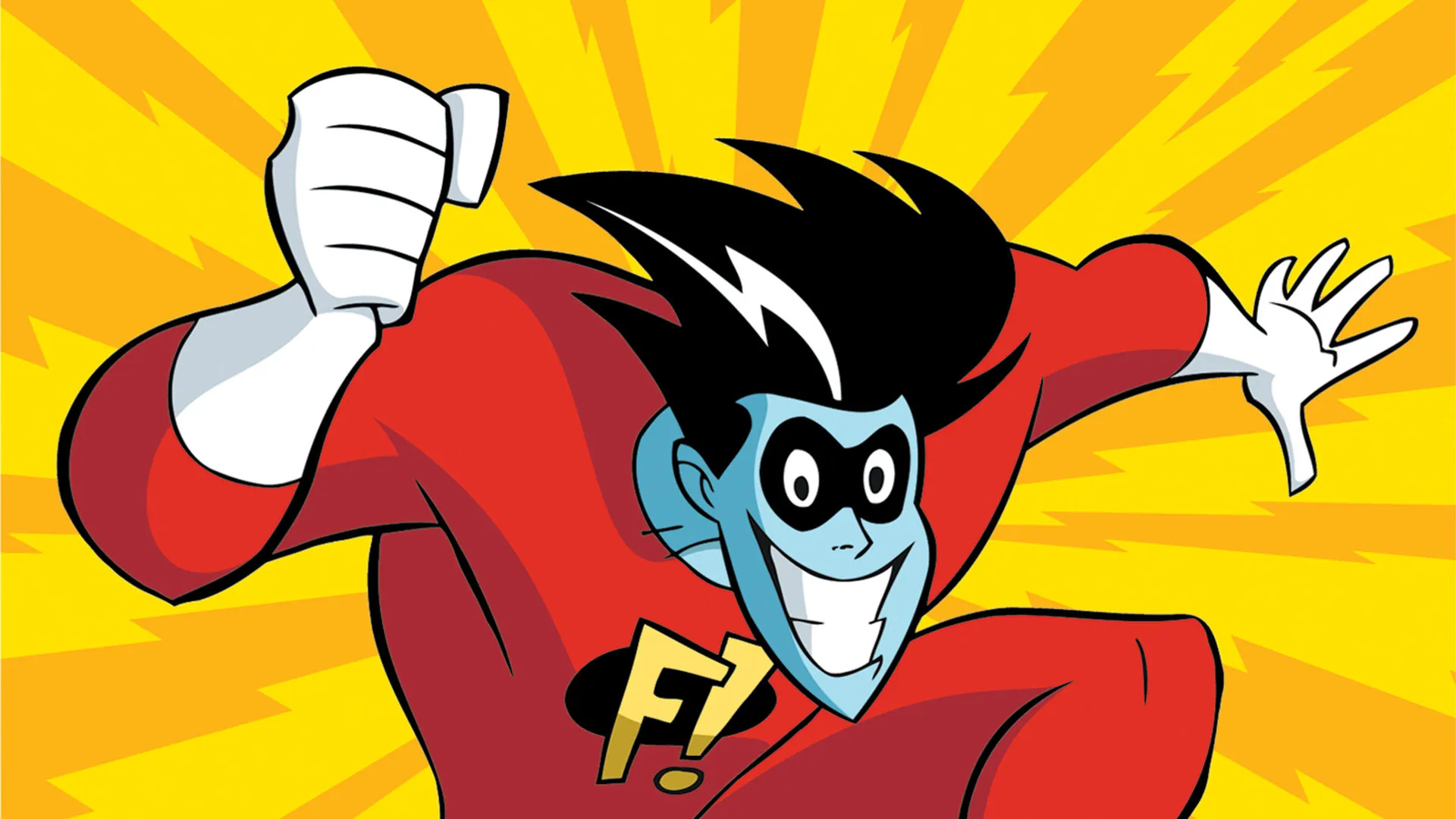
The 90s is rife with superhero content and this one is in the same genre as it follows a crazy superhero on his adventures. However, what sets this hero apart is that he is a teenager which makes him quite relatable to most of his target audience. The hero still goes to school and does everything a normal sixteen-year-old would do but when trouble arrives, he changes into Freakazoid.
This series was created by Bruce Tim and Paul Sini and it is not your regular old superhero action series. It is a comedic show above all else with multiple brands of humor including slapstick and wit that are cleverly incorporated. He got his superpowers due to an accidental computer bug and never looked back. He gained enhanced strength, speed, agility, and endurance but he also lost large amounts of his sanity.
He has all the luxuries a real superhero would have such as his own base, taking from Batman called the Freakalair. This is a project that Steven Spielberg worked on and was attached to and thus, was no doubt an absolute hit amongst regular watchers. However, due to not becoming a brand like The Teenage Mutant Ninja Turtles, for example, not many remember it today, and neither do generations that came after the 90’s babies know about it.
However, there are multiple reasons why the show was so immensely well-received in its time. The very first reason is the bold and vibrant graphics which kept kids entertained and the second was impeccable comic timing. The show was quite manic and high energy but it translated super well because the visuals and the dialogue were able to keep up with titular protagonist Freakazoid. Most interestingly, the show featured a varied rogue gallery that was reminiscent of the 60’s Batman show making this an underrated gem.
Rocco’s Modern Life
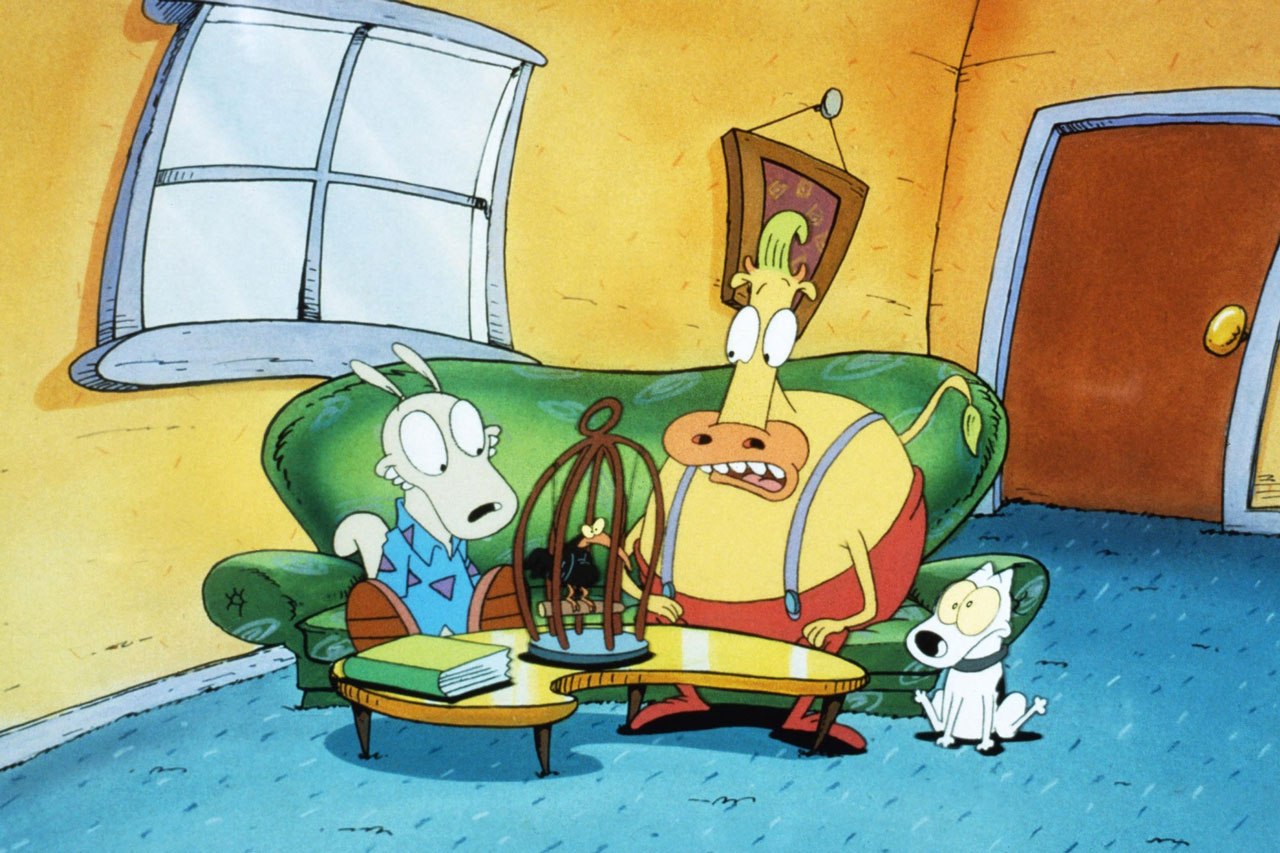
Cartoon Network did have quite a large monopoly over the best shows at the time but other channels like Nickelodeon were not ones to fall behind. If you ever tuned in to Nickelodeon in the early 90s, you have probably come across the titular protagonist, an anthropomorphic Australian immigrant wallaby that has come all the way to the United States, going on all kinds of fun adventures where he encounters issues and dilemmas.
Life in the United States is not as idyllic as he had hoped, as he is surrounded by obnoxious neighbors, mountains of laundry, and everyday problems. Rocko’s friends are always by his side, assisting him in overcoming obstacles and overcoming the challenges that life throws at him!
Rocko is somewhat of a scaredy-cat, but he has some very good friends who always help him out, including Heffe Wolfe, an enthusiastic, fat steer, Filbur, a turtle, and his loyal dog, Spunky. In Rocko’s Modern Life, all of the protagonists are anthropomorphic animals of various species, the great majority of which are mentally ill.
The show was clever, witty, and super funny, although it is known to cater to an older audience due to the nature of the humor employed in the show nevertheless, according to many who watched this on tv, it is one of the best shows to ever air on Nickelodeon.
Aaahh!!! Real Monsters
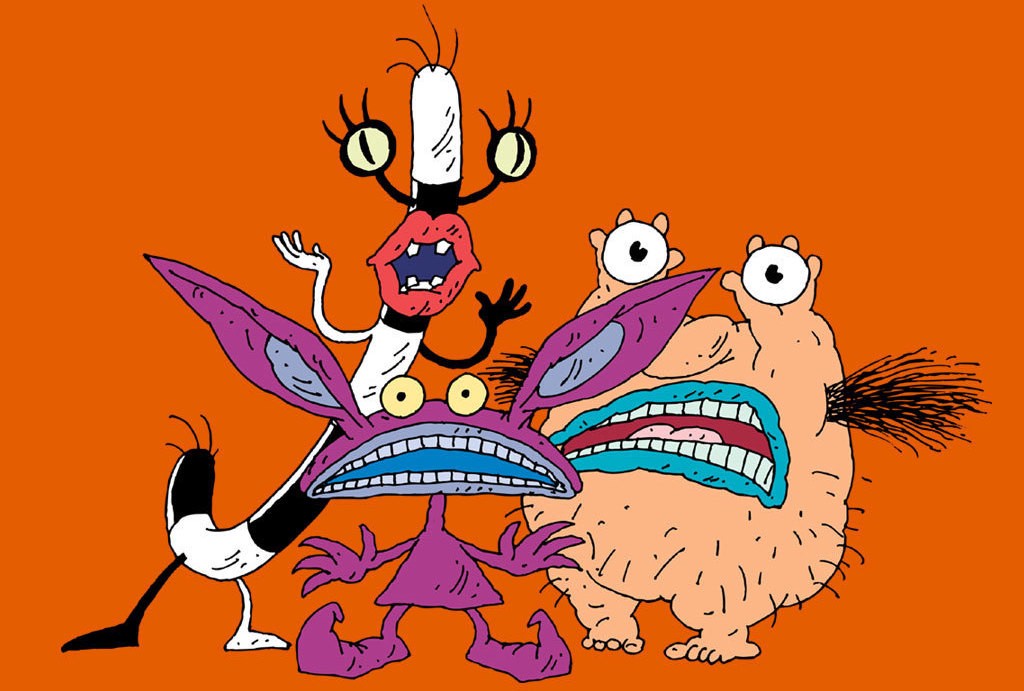
Aaahh!!! Real Monsters is a Nickelodeon-produced animated television series created by Klasky Csupo. The show follows three young monsters, Ickis, Oblina, and Krumm, who attend a monster academy beneath a local landfill and take lessons on how to terrorize humans.
Many of the episodes centered around them surfacing to perform “scares” as school assignments. However, being a terrifying monster isn’t as simple as it appears. You will be punished if you make a mistake with a scare or if your identity is revealed to the public. Our trio encounters various problems, rough situations, and oddities throughout the series as they try to scare humans and please Gromble, the school’s headmaster.
The Empire State Building and the IND Subway System are present throughout the series, indicating that the show takes place in New York City. The monster society has a functioning economic system that uses toenails as a form of currency. It was arguably the Monsters Inc of its time.
The animation is considerably well done. The characters are captivating and the episodes are unique. The writing is also top-notch and the jokes and punchlines land extremely well. More than being scary, it was funny, and that is probably what kept kids hooked to this show filled with monsters of all shapes and sizes. It’s a must-see for anyone who enjoys animation or bizarre cartoons.
With that we come to the end of this video, do you remember any of these shows? Let us know in the comments below!
